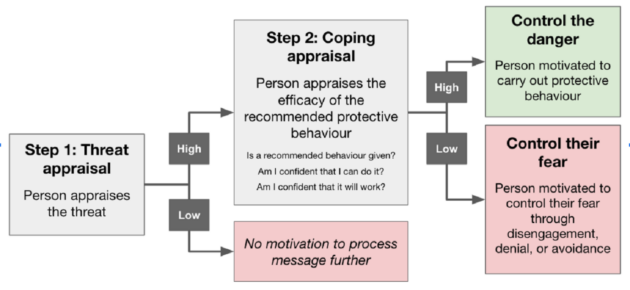Behaviour change
Behaviour change is one of the primary functions of government communications – helping change and save lives, helping the government to run more effectively as well as saving taxpayer’s money.
Use our guide to set more effective and audience-centred communication activities.
On this page:
New guide (September 2022)
For those who are new to crisis communications work, the guide aims to be accessible as an introduction.
Crisis communication: A behavioural approach

What is a behaviour change
Communication can tell people what to do and why to do something, but communication can’t overcome some of the other barriers that are in the way, that are in the environment, like people not having money or not having time to do it.
So behavioural science also helps us focus on the communications activity in a way that actually can help contribute to removing barriers.
About behaviour
A behaviour is an observable action.
A behaviour is not a culture shift, a social norm, a change in attitude or increased awareness. While these may offer a route to behaviour change, they are not the ultimate outcome.
Watch the video: (2 minutes 37 seconds on YouTube)
So behavioural science can be defined as using behavioural and user-centred thinking and really immersing yourself in the context of a problem to understand how people behave in different environments and why.
It can then use that thinking to apply it to facilitate better public policy decision-making.
And behavioural science draws on a broad range of different disciplines, so it’s not just psychology but also disciplines like sociology and anthropology, and even philosophy.
Having people apply to become teachers, or having people drink less alcohol, stopping people from getting involved in knife crime or moving people back into employment… government communications has a role to play in facilitating behaviour change.
Every piece of communication but in the end aim to enable behaviours, so therefore it’s really important to actually understand the behaviours in the context in which they occur, and thinking about how communications can contribute to enabling them.
What’s important is that we start expressing any communications objectives in the form of very concrete behaviours: who has to do what, how and when, in order for us to achieve our campaign aims.
And next we can start really thinking about why the behaviour is currently not occurring? What is the context? What people what are people’s lives like and what are the barriers that are in the way of the behaviour?
is it that people don’t know how to do something? Is it that they don’t think it’s a good thing to do? Or is there something in the environment that prevents them from doing it or makes it really really hard.
Behavioural science can gives us give us some tools to actually analyse the context, analyse these barriers in a very systematic way. Once we’ve understood them, we can then design communications that helps remove those barriers for people to enable the behaviours.
And what’s important here to note is also that communications can tell people what to do and why to do something, communications can’t overcome some of the other barriers that are in the way, that are in the environment, like people not having money or not having time to do it.
So behavioural science also helps us focus on the communications activity in a way that actually can help contribute to removing barriers.
So unfortunately there is no shortcuts, there is no magic book, but I think our behaviour is, at any stage of campaign planning, really important, and you can find out more at the “Strategic communications’ a behavioural approach” document that tells you about how to apply behavioural science at any stage of voices.
Types of behaviour change
Behaviour change can take many forms. You could be encouraging your audience to:
- adopt new positive behaviours, such as regular exercise or attending internal training courses
- stop negative behaviours, such as drink driving or posting harmful content on social media
- maintain or increase existing positive behaviours, such as paying your tax on time or remaining opted into your workplace pension
- reduce existing negative behaviours, such as drinking less alcohol or taking fewer short car journeys
- refrain from adopting new negative behaviours, such as breaching security regulations or becoming involved in knife crime
Learning and resources
Start learning at your own pace and build the skills you need, using our curriculum.
You can also engage with our behaviour change blogs and resources.
These guides set out how to adopt a behavioural approach to ensure your communications is strategic.
- Strategic communications: a behavioural approach includes information about the EAST Framework (your communication activities should aim to make the desired behaviour: easy, attractive, social and timely where possible).
- The Principles of Behaviour Change Communications: this guide lays out how you can use a behavioural approach to design and implement effective communications campaigns.
- IN CASE: A behavioural approach to anticipating unintended consequences: this guide sets out a new approach for anticipating unintended consequences, called the “IN CASE” framework.
- Crisis communication: A behavioural approach: For those who are new to crisis communications work, the guide aims to be accessible as an introduction.
